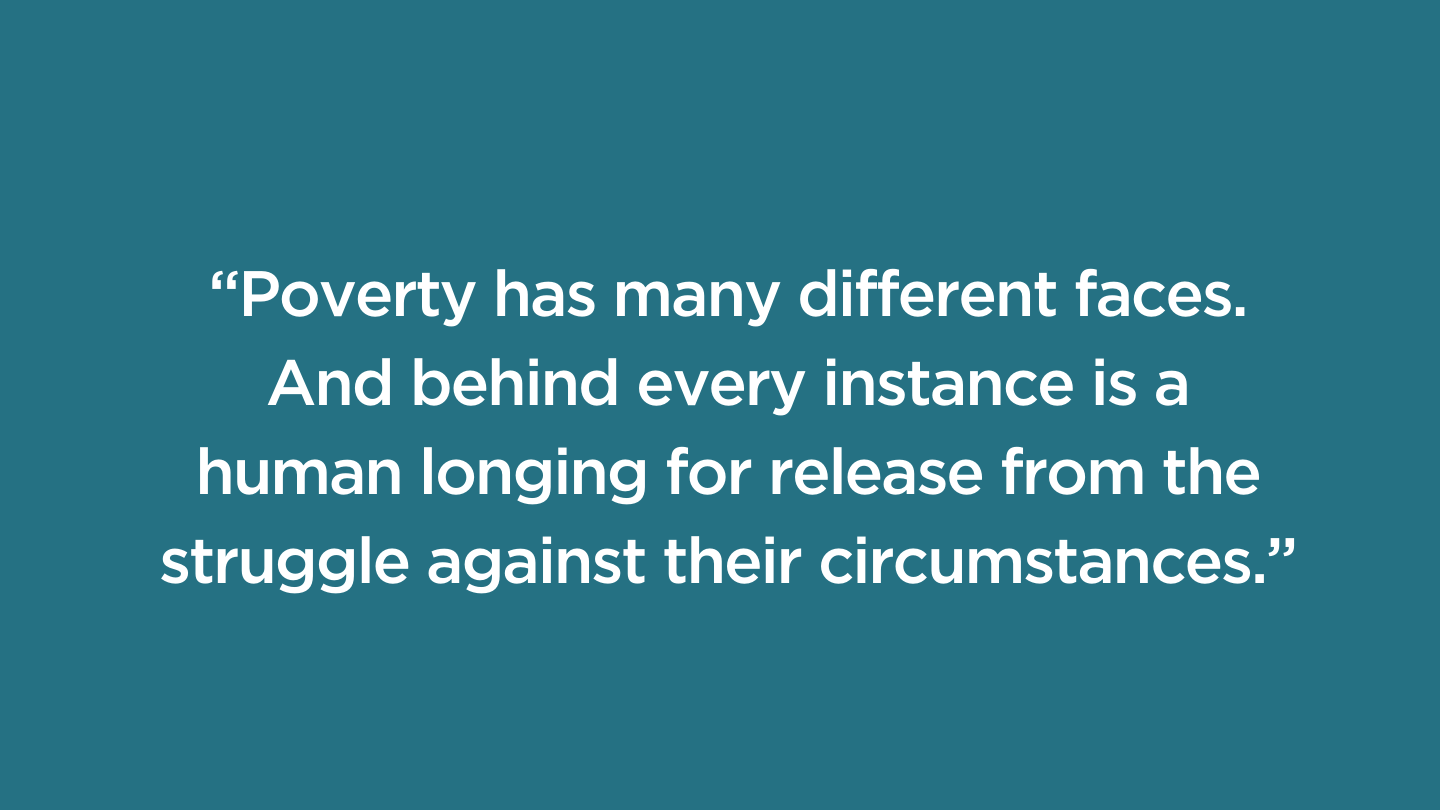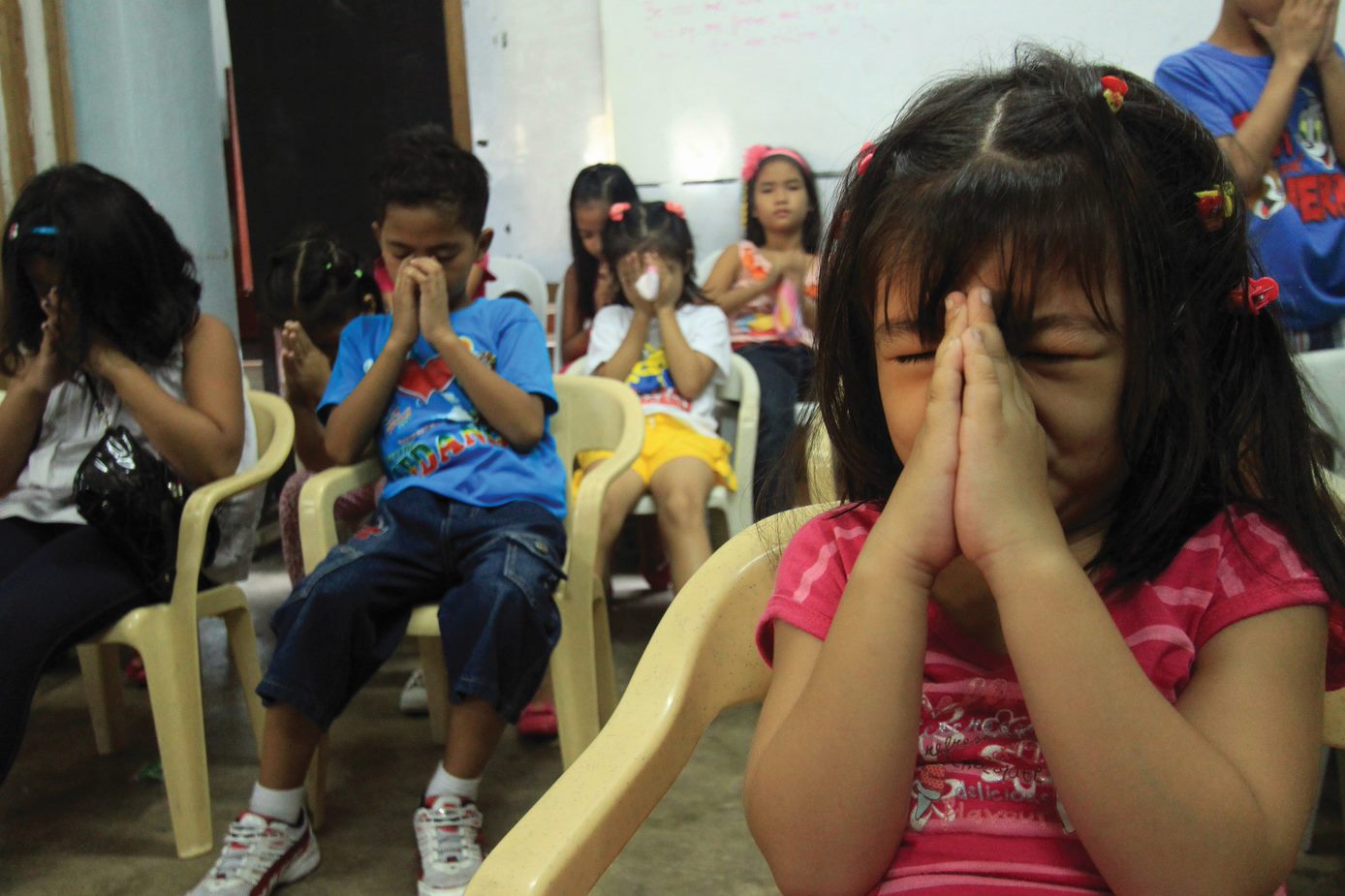Eyes to SeeSample



Yesterday, we looked at the poverty we all experience.
But not all poverty is the same.
The 300+ Bible verses that talk about poverty generally address economic poverty. We all experience broken relationships, but we don’t all experience material poverty. We don’t experience the devastation that arises from being unable to meet basic human needs or realize one’s God-given potential. “Low-income people daily face a struggle to survive that creates feelings of helplessness, anxiety, suffocation, and desperation that are simply unparalleled in the rest of humanity,” said the authors of When Helping Hurts.
Some people are more vulnerable than others to the risks of economic poverty. The Bible often talks of the widow, the foreigner, the victim, and the fatherless. What do these people all have in common? They exist on the margins of society without relational support. Today, the list of those who live in poverty often parallels those mentioned in the Bible: refugees, minorities, single mothers, fatherless children, and people with disabilities.
Everyone suffers when a crisis strikes a nation—whether through famine, war or disease—but children suffer the most.
Globally, 9.3% of the world’s population, more than 700 million people, live in extreme poverty, defined as living on less than $2.15 a day (World Bank).
Poverty isn’t limited to the developing world, either. In Canada, nearly 1.3 million children live in poverty (Children First Canada). Poverty can come upon a family without notice—an illness or sudden disability, unexpected job loss, or leaving an abusive spouse. There are educated, experienced, and, more importantly, loved people experiencing homelessness in Canada today.
Poverty has many different faces. And behind every instance is a human longing for release from the struggle against their circumstances.
But the statistics are not all bad. Each year, the number of children who die before their fifth birthday drops thanks to interventions such as improved access to safe water, access to prenatal and postnatal care, and breastfeeding promotion.
The post-pandemic world has reintroduced new stressors on impoverished people, but other areas continue improving. Gender equality is moving forward with an equal number of girls and boys in secondary school (UN).
The reality of poverty is still bleak. But things can and are changing. You and I can play a part!

Reflect and Respond
- Imagine what it would be like to live on less than two dollars a day – or even to eat on two dollars a day. How would you feel?
- In what ways can broken relationships lead to economic poverty? What other factors might contribute?
- When you read encouraging statistics – the enormous drop in extreme poverty rates and child mortality – what does it tell you about the problems of poverty?
Prayer
I’m thankful, Lord, that You are all-knowing, all-loving, and all-powerful because sometimes it seems like our world is all-needing. I can easily be overwhelmed by numbers and statistics. Help me remember that You care for every person and are already at work in this big, beautiful, but broken world. Amen.
Scripture
About this Plan

Jesus had compassion, especially for those facing poverty, injustice, and inequality. What is our response? Do you see the world the way God does? If you want to go deeper and understand the spiritual root of poverty, join us for this 42-day video-assisted bible study from Compassion Canada. Ideal for group study or a challenging personal journey. Abridged and Updated.
More
We would like to thank Compassion Canada for providing this plan. For more information, please visit: http://cmpsn.ca/YV









